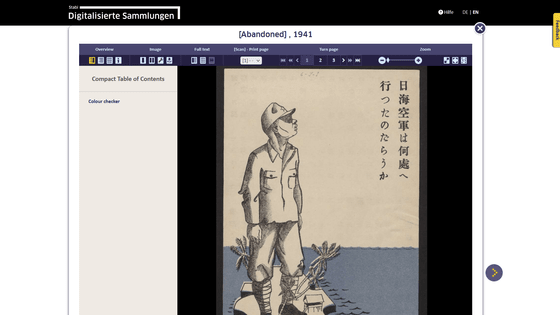The Codex Atlanticus is the largest fully digitized collection of Leonardo da Vinci's sketches and manuscripts

Leonardo da Vinci left behind a collection of
Codex Atlanticus
https://codex-atlanticus.ambrosiana.it/

A Complete Digitization of Leonardo Da Vinci's Codex Atlanticus, the Largest Collection of His Drawings & Writings | Open Culture
https://www.openculture.com/2025/10/digitization-of-leonardo-da-vincis-codex-atlanticus.html
In addition to his art, Da Vinci devoted much of his time to scientific research and the conception of engineering projects. However, very few of his projects were realized or published during his lifetime; most remain as notes in undecipherable manuscripts. Two-thirds of these manuscripts are believed to have been lost, and projects are underway to digitize them for long-term preservation. For example, the Arundel Manuscript is available on Google's database, and the Victoria and Albert Museum has made the Forster Manuscript available online.
The Codex Atlanticus is considered to be the largest collection of Da Vinci's manuscripts. Information design company The Visual Agency has collaborated with the Ambrosian Library in Milan, which owns and preserves the original of the Codex Atlanticus, to digitize the Codex Atlanticus and release it as a digital work.
Go to Codex Atlanticus, scroll down and click on ' EXPLORE THE CODEX '.

An overview of the digitized Codex Atlanticus was displayed. It contains 1,118 pages, and the topics covered on each page have been classified based on philological research. The topics are color-coded as follows: green for 'Geometry and Algebra,' yellow for 'Physics and Natural Sciences,' pink for 'Tools and Machines,' blue for 'Architecture and Applied Technology,' and red for 'Human Sciences.'
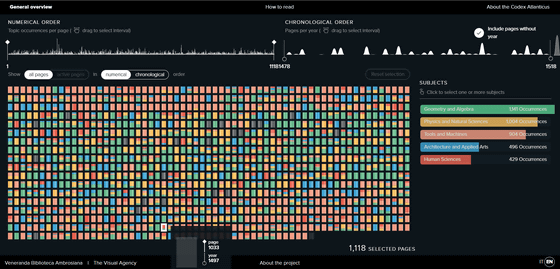
Click on one of the pages.

You can see the page: on the left you will find as much information as we know about the topic of the manuscript, and on the right you will find the number of pages with a similar topic.
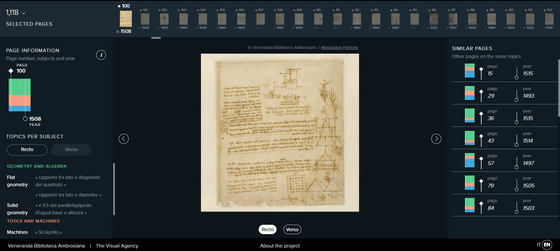
At the top left of the summary page is a chart showing the number of topics per page in the manuscript, with some pages covering as many as 36 topics.

The number of manuscripts by era is shown in the upper right corner. If you move the slider to narrow the era, some of the manuscripts in the list will be grayed out, and only manuscripts from that era will be displayed.
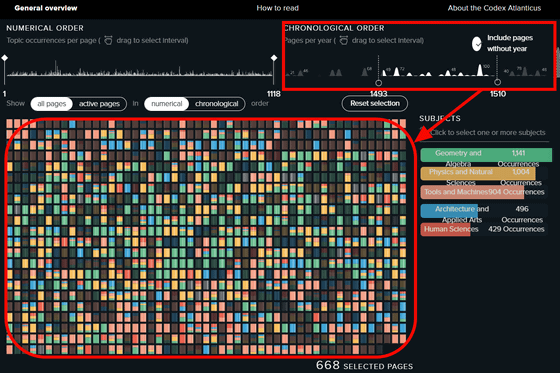
Also, if you select 'chronological order,' the manuscripts will be sorted by page number, starting with the oldest. According to the Codex Atlanticus, the oldest manuscript dates to 1478, and the newest to 1518. Any manuscripts after 1518 are of unknown age.
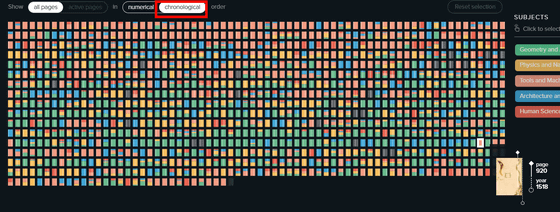
Related Posts:
in Web Service, Review, Posted by log1e_dh





